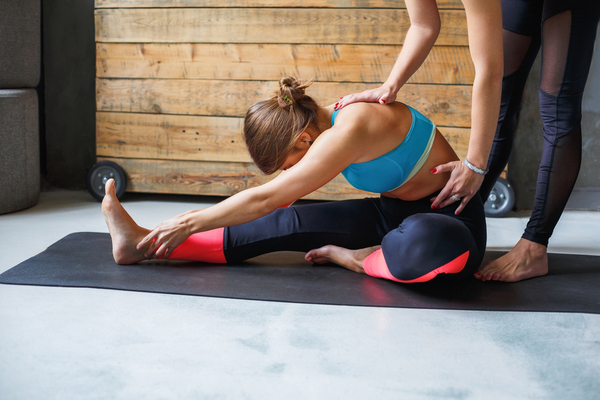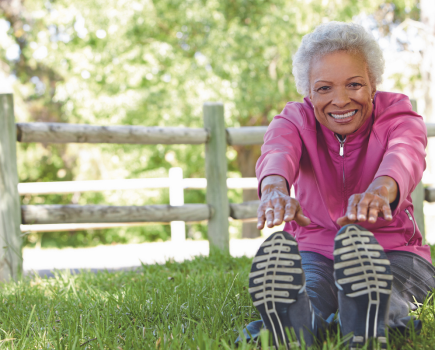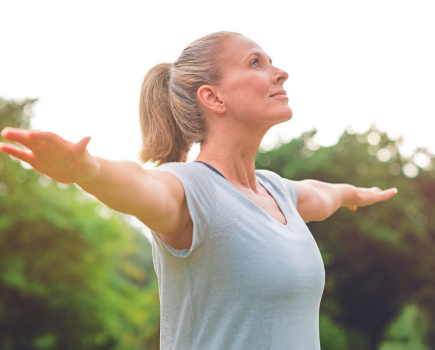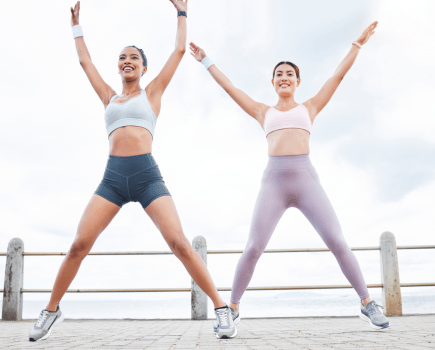Whether you’re suffering from niggles or just want to improve flexibility in general, assisted stretching could be the answer.
As the Beatles once sagely pointed out, we get by with a little help from our friends. But have you ever considered that you might benefit from a (literal) helping hand from someone else? It’s easy to neglect stretches, or give a cursory nod to tight glutes and calves, but gaining a bit of professional help can work wonders.
But what exactly is assisted stretching? In a nutshell, it’s when someone else – most likely a personal trainer, physiotherapist or chiropractor – helps you move more deeply into a stretch. If you’ve ever seen PTs at the gym leaning over a client who’s lying down, helping to press their knee towards their body you’ll get the idea.
‘The theory is that it helps improve your mobility more quickly than static stretches, and having an expert who knows how to apply pressure safely can take the guesswork out,’ says Alastair Crew, a personal training and Product Head at David Lloyd Gyms.
‘There are many different techniques and styles, depending on training and preference, but they all work just as well towards the same goal.’
Feeling more relaxed
Most stretching will involve you gently contracting and relaxing your muscles as they help guide your body slightly deeper into movements. It turns out this gentle encouragement can have a lasting impact.
‘You’re basically tricking your nervous system into increasing your range of motion,’ says Alastair. ‘When your body feels unsafe – for example, if it feels that attempting the splits would likely cause injury – it will prevent you from going further. But when it feels safe it will let you move a little more. .’
When to ease off
It’s not for everyone. For example, it probably won’t suit people with hypermobility, and if you are injured you’ll need to mention that.
‘There are exercises to help people rehabilitate from injuries or correct postural issues,’ says Alastair. ‘If you’re injured it might be worth seeking a PT who’s a corrective exercise specialist, who can spend a big chunk of the sessions on improving your range of mobility.’
However, assisted stretching can benefit the majority of people. ‘It’s a nice way to keep up your general body maintenance,’ says Alastair.
And if you’re not keen on being touched, it doesn’t rule it out as an option. There are alternative methods that trainers can utilise, such as using a foam roller as a barrier between you.
The best part? Aside from sometimes feeling intense (never painful), it’s actually quite an enjoyable treatment.
Where can I try it?
As well as speaking to your gym, physiotherapist or PT about assisted stretching, there are classes and courses to help.
StretchLAB (stretch-lab.co.uk) is a studio in London dedicated to one-to-one assisted stretching. Book a 25-minute (£28) or 50 minute (£55) session.
Moving Stretch (movingstretch.com) is a UK-wide service offering flexibility classes and workshops using movement and resistance, and assisted stretching sessions.
Pole Sessions (polesessions.co.uk) in Manchester has a supervised partner stretch section in its stretch and flex class. Even if pole dancing isn’t your thing, stretching is a vital part of the discipline so it’s a good place to learn. This costs just £4.
Try DIY stretching
It’s not advisable to try assisted stretching with a friend rather than a professional. However, there are some self-massage and stretching techniques that can achieve similar results.
Foam rolling
‘This is about myofascial release,’ says Alistair. ‘Roll along your muscles until you find a tender spot. Stop and hold the pressure for 20-30 seconds, when you should feel a release. On a scale of one to 10, one being feeling nothing, 10 bringing tears to your eyes, you’re looking for about a seven. This can help you see a 50-70 per cent reduction in sensitivity, which should help you move more easily.’
Powerplate
If your gym has a Powerplate (or other version of this body vibration tool) you can use it for increased mobility. ‘Stand on it and do your usual static stretches. The vibrations and slight instability will help you travel deeper into the position. It will also reduce discomfort, while holding the handles will help you into the stretches safely,’ says Alastair.







